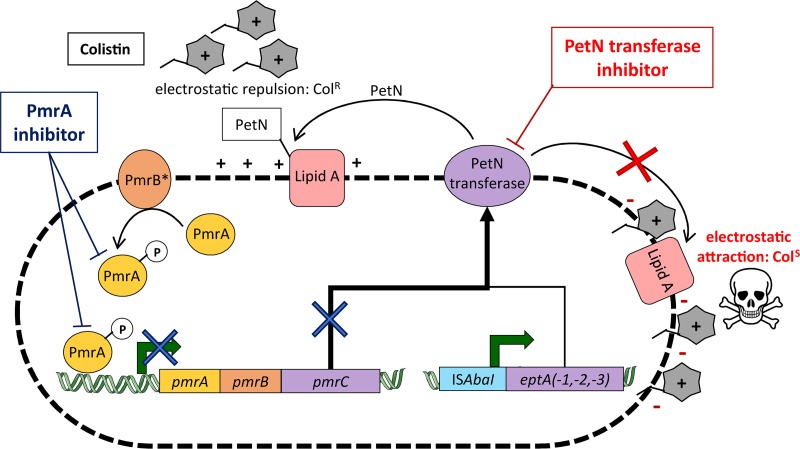FIG 5.
Schematic representation of A. baumannii colistin resistance mechanisms. The two pathways leading to phosphoethanolamine (PetN) transferase overexpression and colistin resistance are represented. The major A. baumannii PetN transferase overexpression pathway results from pmrC expression, which is activated by the transcriptional regulator PmrA previously phosphorylated (activated) by a mutated variant of the sensor kinase PmrB (PmrB*). Alternatively, A. baumannii PetN transferase overexpression can result from the integration of the ISAbaI insertion element upstream of an eptA isoform. PetN transferase enzymes decorate the outer membrane lipid A with PetN, thereby lowering the negative charge and preventing colistin binding. Potential PmrA inhibitors would only block the pmrC pathway (dark blue cross), while PetN transferase inhibitors would block lipid A modification (red cross) and restore colistin efficacy against A. baumannii.

